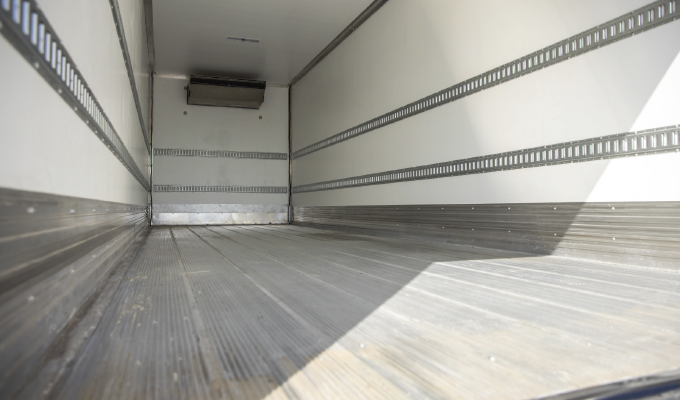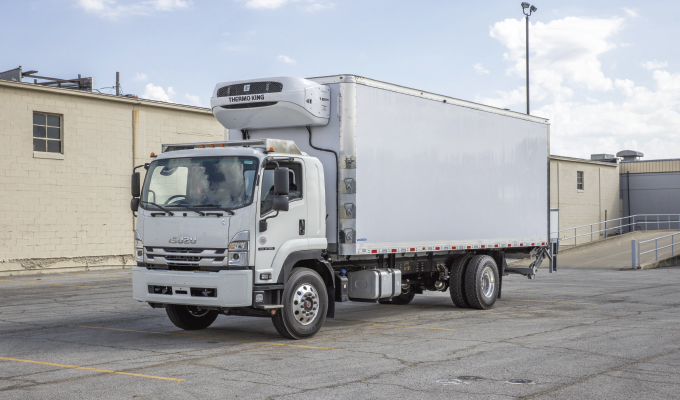While refrigeration machines were first commercialized nearly 150 years ago, the growth of both the U.S. and global cold chain shows no sign of cooling. In fact, a recent book, Frostbite: How Refrigeration Changed Our Food, Our Planet, and Ourselves, stated nearly three-quarters of what Americans currently consume passes through the cold chain at some point.
The challenge of meeting those demands is a long and complex list that cannot be ignored. Every step in the cold chain builds on a previous action, must occur in a succinct sequence or risk a disastrous or expensive ending.
While demand for the cold chain is growing, we also know that the cold chain requires constant temperature monitoring, is subject to weather conditions and involves numerous industry players. Possibly the biggest of all, the cold chain creates a big carbon footprint. In response, the transportation and logistics industries are rethinking how goods are moved along the cold chain. Tractor-trailers, truck bodies, and cold storage facilities are the linchpin of the cold chain. Now is the time to rethink the technology used in the cold chain logistics infrastructure.
RETHINKING THE STATUS QUO
To date, more than 5.5 billion cubic feet of cooled warehouses already exist in the U.S. Typically, moving products between the first and final mile of these warehouses was done by internal combustion engine (ICE) semi-trucks and trailers. With new transportation technology advancements, the focus is being shifted to the possibilities of electric vehicles (EVs) to reduce the carbon footprint of the cold chain. EVs offer the potential to reduce emissions and reduce costs in a hyper cost-conscience industry. Add to that, the growing pressure to meet emissions regulations.
As the transportation industry doubles down on EV and autonomous fleets, companies face a new heavy-weight burden. EVs often weigh 30 percent more than comparable ICE vehicles due to their batteries. This translates into added weight on the truck, on the transportation refrigeration units (TRU) and on the trailer. All of that added extra weight will have an impact as well as decrease the overall range capacity of EV batteries. While batteries add weight and impact range, there are other efficiencies to consider in cold chain transportation.

ZONING IN ON THERMAL EFFICIENCY
When we think about refrigerated truck bodies in general, the industry historically has not seen a lot of innovation or evolution in how they are built or in their technological components. In fact, they have been built the same way for the last 40 years. OEMs might be overlooking one of the biggest areas of innovation, utilizing composite panels for overall structure. Traditional refrigerated body builds are typically built with Freon-blown urethane as an insulation foam for thermal efficiency and wrapped with structural metal like aluminum posts and skins. However, composite panels consist of a foam-insulated core surrounded by a polymer fiber-reinforced shell with a protective gel-coat surface.
Today, new composite technology is ready to help fleets. Companies tapping into these emerging technologies will find truck bodies that are much lighter than most conventional designs. These composite panels also provide greater overall thermal efficiency, meaning fleets will have to spend less energy powering the TRU. By making the truck body lighter and more thermally efficient, shippers will use less energy to cool down cargo and put that energy into extending their range with EV batteries.
LIGHTENING THE WEIGHT LOAD
In addition to improved thermal efficiency, composite panel truck bodies can provide improved structure overall. Composite material has the structural strength to meet operational needs without metal posts. Why eliminate metal? It is no secret that metal is not a very good insulator. Metal will conduct heat or pull cold through. By taking metal out of the structure, truck bodies are both thermally efficient and about 15 percent lighter weight, making a big impact when you start adding it up.
Composite panels also deliver a smoother exterior, with fewer voids or areas for water to be trapped or leaked in. Less moisture also means added improvement to maintenance and product degradation. This also means the vehicle could have fewer spots that have drastic changes in temperature profile and again leading to improved thermal efficiency.
New offerings such as Wabash’s EcoNex composite panels are looking to help improve the cold chain and improve the overall truck body footprint by providing both thermal efficiency and structure in one package. Overall, a refrigerated body using the panels is roughly 25 percent more thermally efficient and provides about 700 pounds of weight savings versus a traditional body.
MOVING COLD CHAIN TRANSPORTATION INTO THE FUTURE
The cold chain industry is facing a growing call to modernize. Meeting the demands for climate-controlled and temperature-sensitive products, such as pharmaceuticals, produce and perishable foods, while still delivering on safety and quality are complex. New technology, including the use of sensors, real-time tracking and data analytics, offers great potential to address challenges. Key improvement possibilities include supply chain visibility, increased thermal efficiency and reduced carbon footprint.
By adopting new sustainable technologies and energy-efficient solutions, such as composite technology, the industry works to limit its environmental impact. Through innovation, the cold chain industry can achieve improved efficiency, regulatory compliance and customer satisfaction in an increasingly competitive market.
About the Author
Kevin Sumrak is the senior director of sales and truck body strategy for Wabash.




